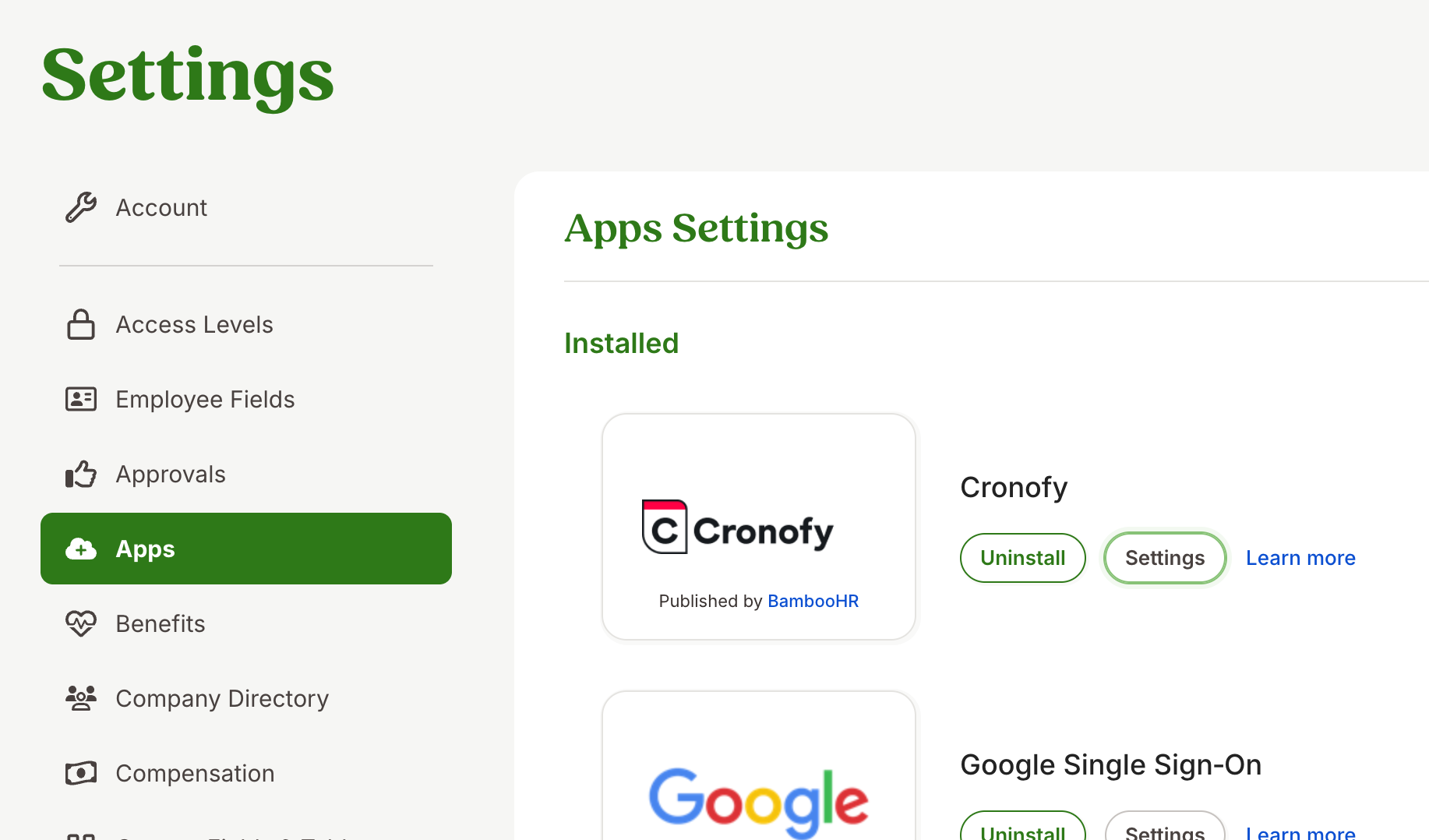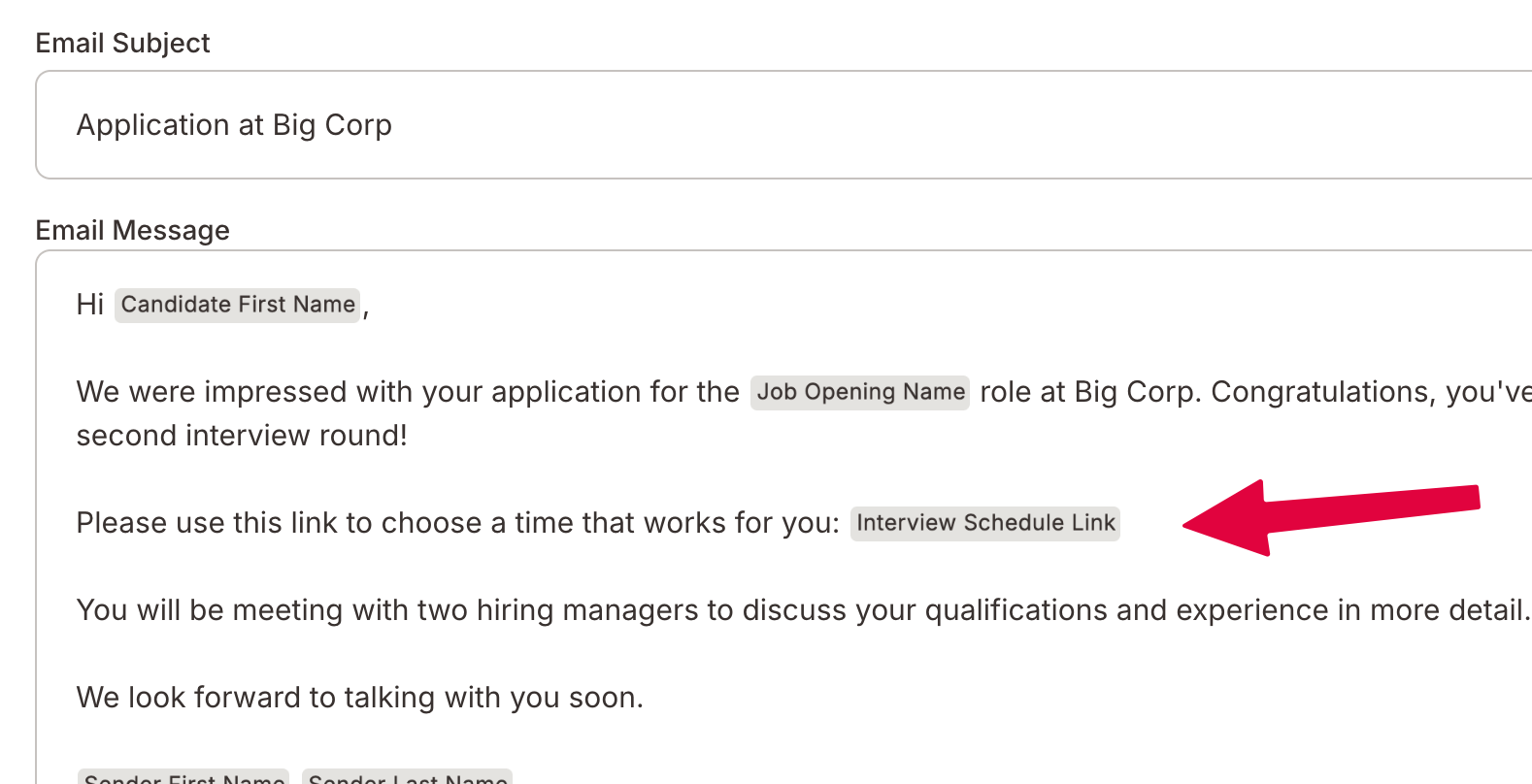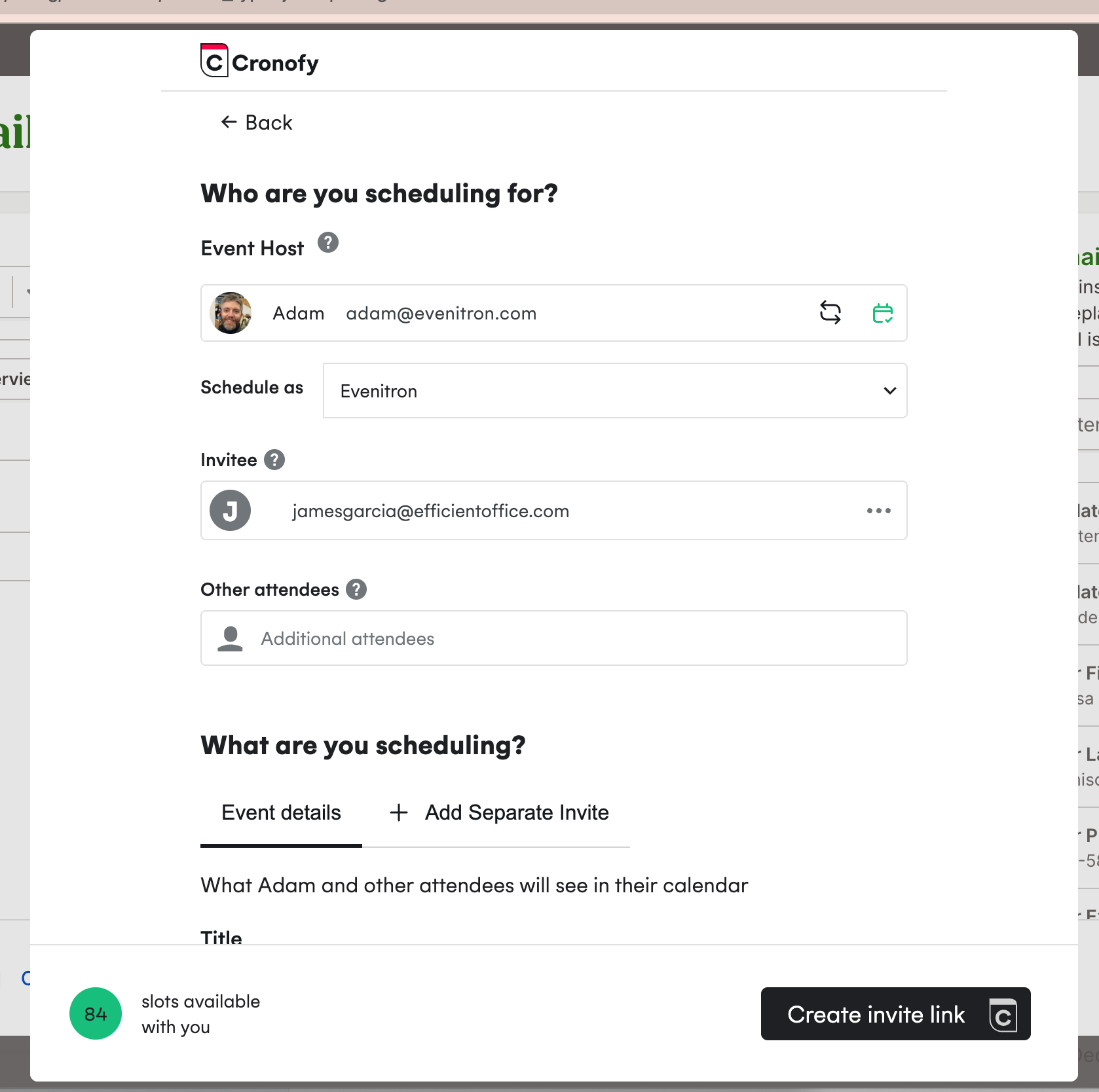Integration Guide - Interview Scheduling
This guide gives you an example of the steps required to implement interview scheduling link generation in your application with Cronofy’s Embedded Scheduler. If you would like us to work with you on a plan for your application we’d be happy to help. Get in touch hello@cronofy.com
Steps
| Step | Description | Example Duration |
|---|---|---|
| 1. Customer Onboarding | Allow customer admins to connect their company account in your application to Cronofy | 1 week |
| 2. Ad Hoc Scheduling | Allow recruiters to create and send candidate self-scheduling links as they need to. | 2 weeks |
| 3. Create and Update Interview Records | Receive and process push notifications from Cronofy to ensure Interview records reflect scheduling and changes. | 2 weeks |
| 4. Automated Scheduling | Allow user to choose a Cronofy Scheduling Template to use when Candidate transitions to a hiring stage. Use the Scheduler API to automatically generate link to be sent to the candidate. | 2 weeks |
| 5. Placeholders | Allow users to setup Cronofy Scheduling Templates with replacable data fields from your application. | 1 week |
Completion of step 3 represents a key milestone that would provide value to customers.
1. Customer Onboarding
The purpose of this step is to establish the relationship between a customer’s company account in your application, often called a tenant, and a Cronofy Organizational Unit.
Cronofy provides a specific onboarding flow for Embedded Scheduler Integrations. This is accessed via a URL which includes a signed JWT created by the Integration.
https://app.cronofy.com/sign_up?style=embedded&embedded_authtoken=EMBED_TOKENThis will take the user through a flow to setup the Cronofy Organizational Unit and link that to their company account in your application.
Users that open the Cronofy embedded UI whilst in your application will also be automatically linked to the same Organizational Unit. The value of tenant_id in the JWT is used to map between their company account in your application and Cronofy. Including this in every JWT ensures this will happen.
Example Implementation #
In the Admin area this integrator has an Apps section where admins can setup the integration with Cronofy.

This then opens a dialog which contains a redirect to the Cronofy onboarding flow.

Relevant Documentation #
2. Ad Hoc Scheduling
Once the connection between your application and Cronofy has been established the users can start scheduling.
Generally we see this being implemented as part of an alternate flow to the manual creation of an interview. This flow will allow the user to send a self-serve interview scheduling link to a candidate.
An option is to add a mail merge field to an existing communication module that allows the user to create templates. The presence of that mail merge field in a communication can then trigger the opening of the Cronofy Embedded Scheduler to allow the user to generate a link which is passed back via the JS API.
Your application can pass parameters to the Embedded Scheduler, eg candidate email, to pre-fill the form with relevant information.
The message containing the scheduling link is then sent to the candidate to choose a time.
Example Implementation #
A mail merge field has been added to allow an Interview Scheduling Link to be included in messages to candidates.

Before the message is sent, the Embedded Scheduler is opened to allow the user to define the parameters for scheduling. Either from pre-defined templates or on an ad hoc basis.

Relevant Documentation #
3. Create and Update Interview Records
When states changes occur in the lifecycle of a Scheduling Request (the object accessed via a Scheduler Link), push notifications are sent to a configured end point for the integration. These notifications include when the candidate has chosen a time or has rescheduled.
The push notification payloads contain the data required to create and/or update Interview records in your application. They also include a correlation_id which is passed by the integration to the embed to allow easy reconciliation.
Relevant Documentation #
4. Automated Scheduling
A typical use case for automation is allowing users to have an interview scheduling link sent to the candidates when they transit from one stage of the hiring pipeline to another.
Cronofy supports this use case by allowing users to create Scheduling Templates and those being used via an API endpoint to create Scheduling Requests. The link can then be sent to the candidate.
An OAuth2 authorisation flow will be followed by the Customer’s admin to allow your application to create Scheduling Requests via the API on their behalf.
The previous work on Creating and Updating Interviews will result in Interviews being created and synced as a result.
Relevant Documentation #
5. Placeholders
Allow the users to construct templates with replaceable placeholders that are automatically populated with information from your application.

This requires some internal configuration on the Cronofy side to make this available to your users. So get in touch with our support team to set this up support@cronofy.com.